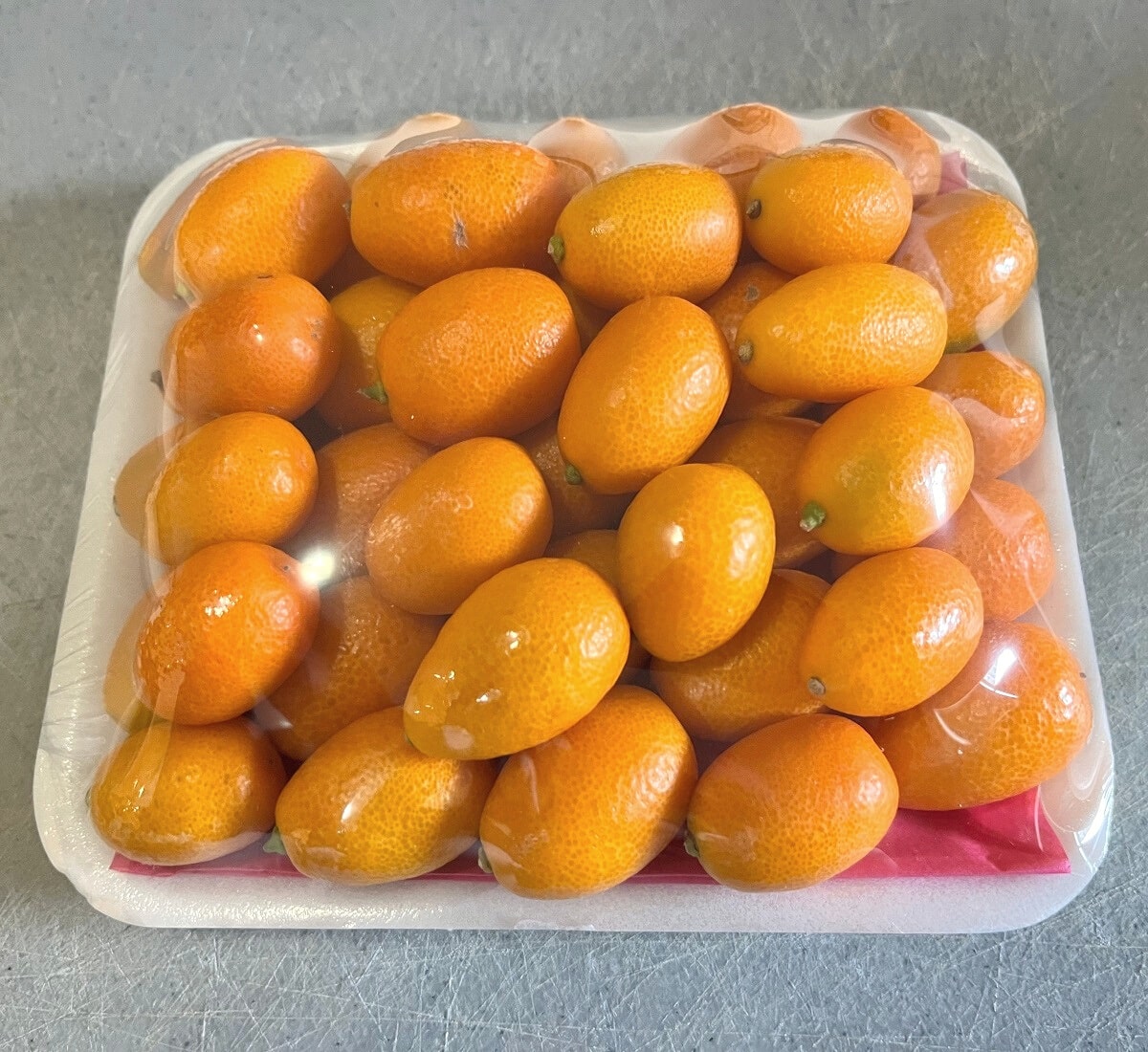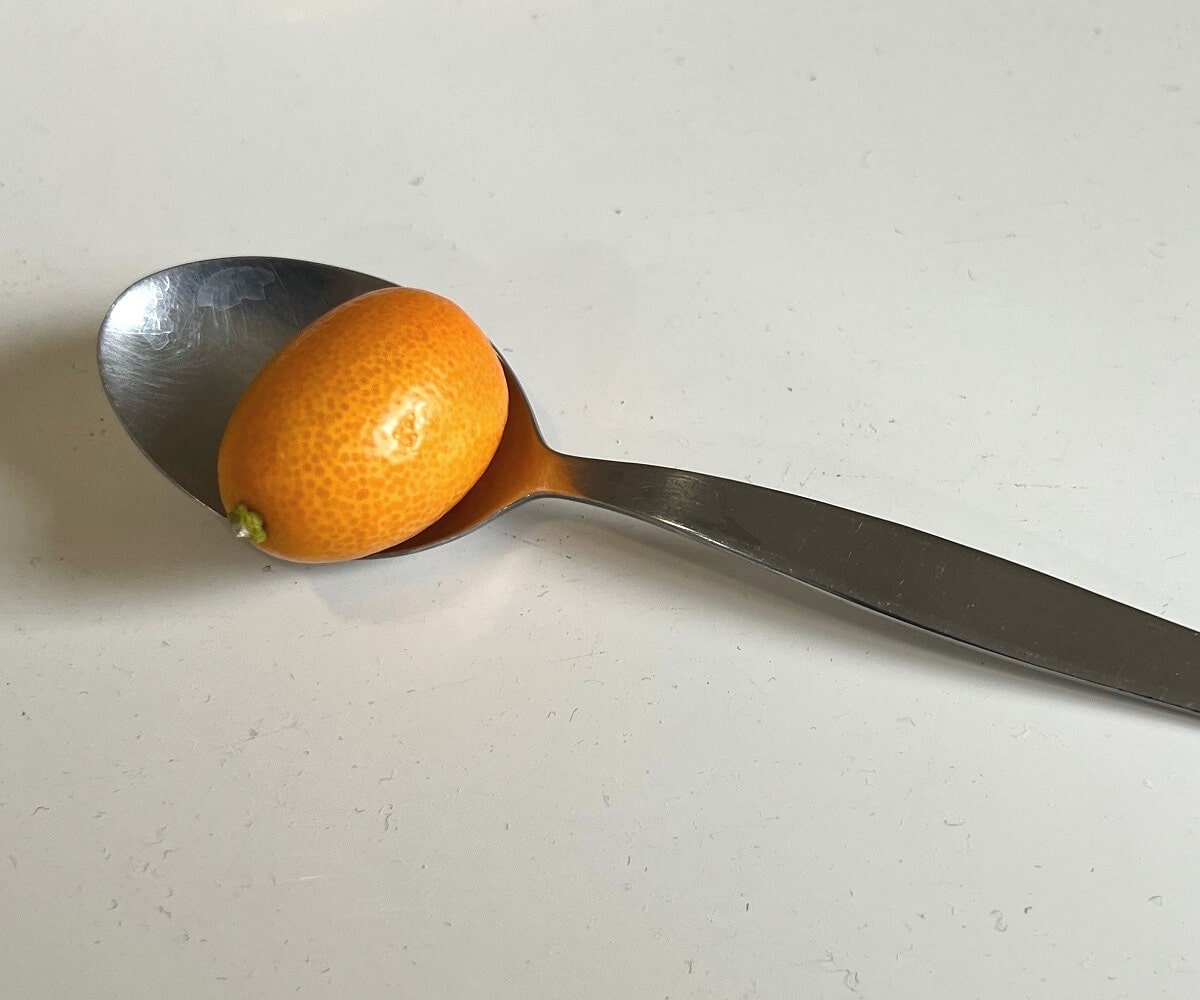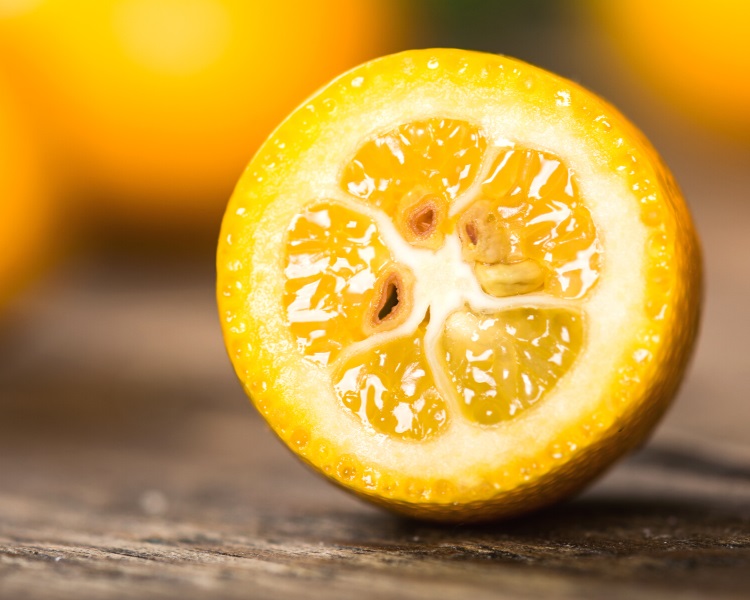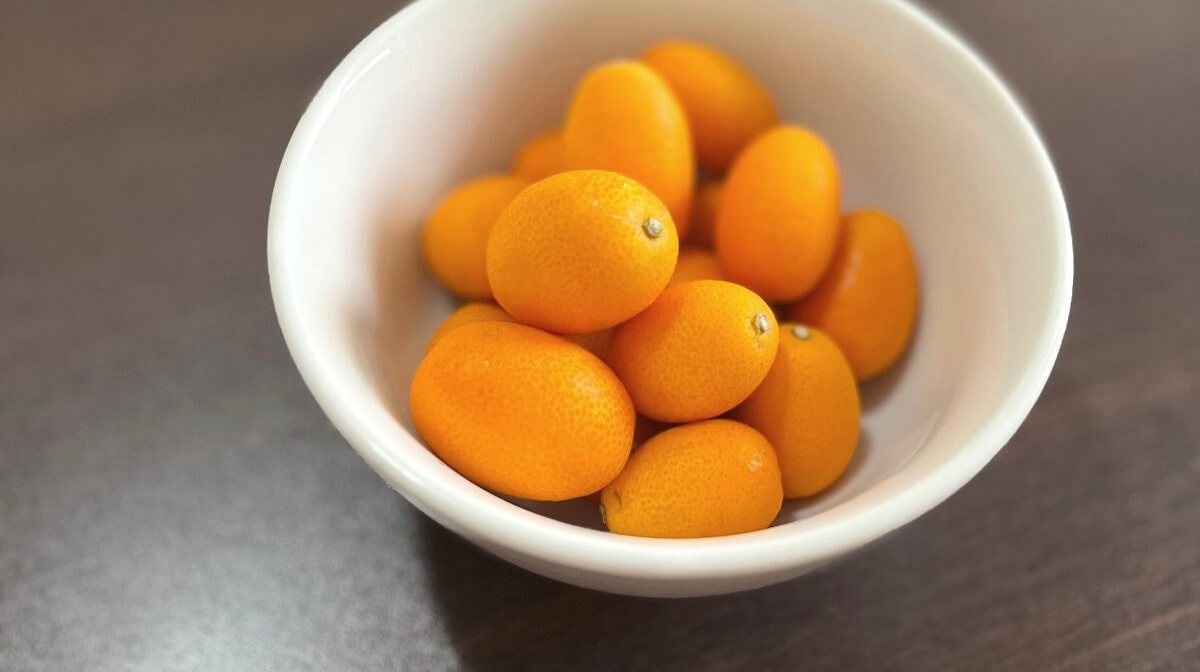Last updated: September 19, 2023
Learn how to cut and eat kumquats with this step-by-step guide, plus handy recipe tips for this tiny but tasty fruit.
The kumquat is a mini citrus fruit with one characteristic that is very different from other fruits in its family. And because of that difference, it is not eaten the way most people would expect.
Read on, as I am going to show you how to eat a kumquat correctly so you can taste all the sweetness of the fruit as well as that tart juice.
How to Eat a Kumquat Fruit
The tiny kumquat fruit originated in China but is now cultivated in other parts of South Asia and Asia-Pacific, such as India, Japan, and the Philippines.
Most botanists agree that kumquats are in the citrus family, known as Rutaceae, but are unique enough to be broken out into their own genus.

In terms of physical form, these little oranges are about the size of a large olive. Unlike most citrus fruits, their skin isn’t bitter but actually pleasantly sweet and completely edible.
In fact, the skin of a kumquat is much sweeter than the sour, juicy flesh inside.
Steps to Eat
Because of this odd makeup, the best way to eat a kumquat is to eat the flesh and skin at the same time. Or, if you don’t like the sour flavor, eat just the skin.
- Wash the kumquat using a fruit and veggie spray, diluted vinegar, or by running it under cold water and rubbing the skin.
- Pull off the green nubs of the stem and blossom, if needed.
- Roll the fruit between your hands to activate the oils in the peel. This will enhance the flavor and create a more aromatic eating experience.
- Eat the kumquat whole. The rind, flesh, and seeds of the kumquat are all edible. The rind is sweet, the flesh is sour, and the seeds are a touch bitter.
The initial flavor you’ll get is the sweetness of the skin, followed by the tart, citrusy flavor of the flesh.

Alternatively, for a sweet treat, cut or bite the end off the kumquat, squeeze out the juices and seeds, and eat only the skin.
If you don’t want to eat the seeds, cut the fruit in half to reveal the seeds, remove them, then eat the rest. Or, eat the fruit whole and spit out the seeds as you go.
Pick a Ripe Kumquat to Eat
Kumquats will not ripen after being removed from the tree, so it’s important that you only pick or purchase fruits that are perfectly ripe and ready to be eaten.

A ripe kumquat will be orange to orange-yellow in color without any green coloration on the rind. It should feel firm, like an orange, without any soft spots.
Kumquats come in a variety of cultivars, all with slightly different looks, and knowing which cultivar you have will help you identify the ripest fruit.

Nagami kumquats are the most common cultivar in the US and have a light orange color when ripe, similar to a navel orange. They are about the size of a large olive and have a similar shape with rounded ends.
Recipe Tips
The multi-layer flavor profile of this fruit makes it impressively versatile in the kitchen. Here are a few of my favorite ways to use kumquats.
- Jams and preserves:
Kumquats have just the right balance of sweet and sour to make an excellent fruit spread. And their seeds are naturally high in pectin to aid in the curing process. - Cocktails:
Cuter than oranges and more vibrant than lemons, little slices of kumquats make a great substitution in any citrus-forward cocktail. - Seafood:
For a more complex flavor, try substituting lemons for kumquats in any of your favorite seafood dishes. They are perfect for accompanying fish or for squeezing onto oysters. - Salads:
Any greens salad with a citrusy dressing will benefit from the bright color and touch of sweet-tartness that the kumquat brings. - Fruit salads:
Perfect for adding color as much as flavor, these little citrus fruits work just as well in tropical salads as standard fruit mixes. And unlike oranges or mandarins, you don’t have to spend time peeling them! - Baked goods:
Thinly sliced kumquats make a beautiful, flavorful addition to sweet breads, cakes, and pies. - Marinades:
Tart but sweeter than lemon, these fruits pair perfectly with chicken and fish. - Garnish:
Thin slices can be added to sun teas and used to top desserts. You can also use the tart juice to flavor water, tea, or smoothies.
Kumquats will only stay good on the counter for a few days. Their flavor is best preserved when stored this way.
If you wish to store them longer, put them in an airtight container and place that container in the crisper drawer in your fridge. This way, they can last up to a couple of weeks.

